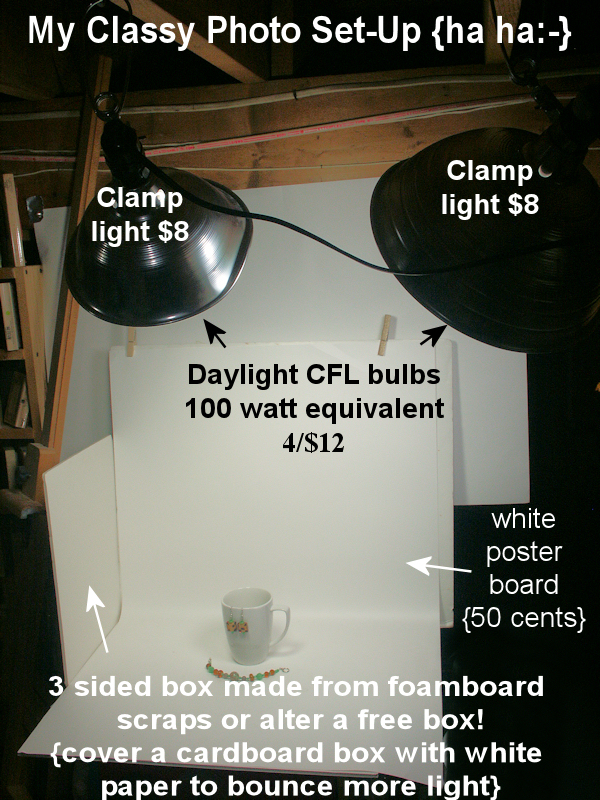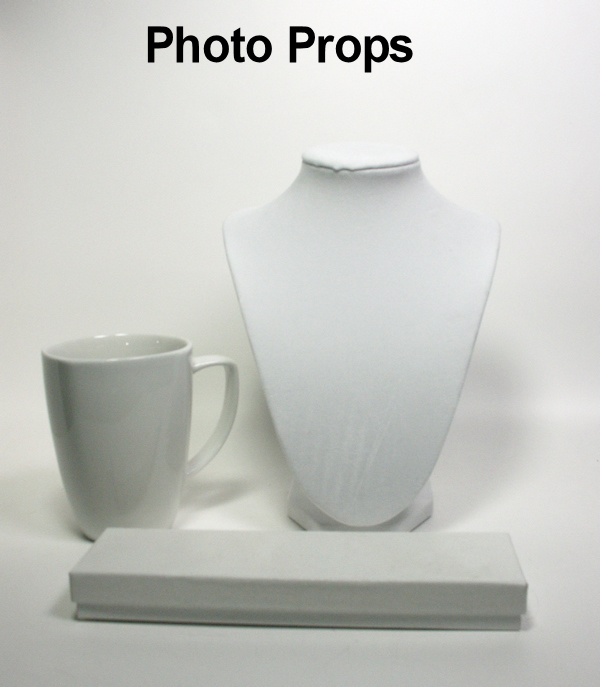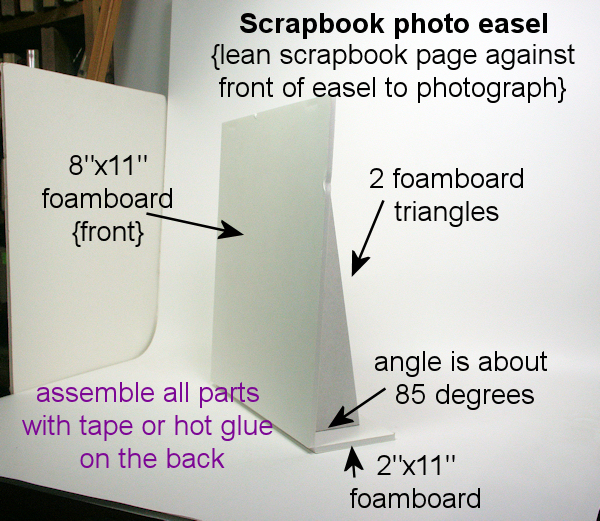Hello Wowwers! Today my main craft desk is filled to the brim with stuff to package up for the craft fair I am doing in a week and a half {holy smokes! I am just now realizing it is less than 2 weeks away!?!} so instead of showing you the same old crap I’ve been making I thought I’d share another hard-used work area…my photography area!
That’s pretty sophisticated huh? Well, maybe not but the proof is in the pudding…or the photos so to speak so I thought I film a quick video blog today demonstrating my photography techniques and offering tips that you can try if you are unhappy with the way the photos of your crafts turn out.
Quick Tip Review:
- Hold your camera steady, tuck your elbows in at your sides, hold your camera in both hands close to your body, press the shutter halfway down to focus, exhale, press the shutter the rest of the way. Viola! Alternately you can use a tripod and a remote clicker to eliminate shake.
- Use the macro feature fore really small stuff like jewelry or details on a card or scrapbook page. This allows you to get physically close to the object and keep it in focus. It blurs the rest of the image for a professional ethereal look. I will often take a photo in regular mode too in case I don’t like the effect when I am editing. On most cameras there is a button on the back with a flower on it, push that to turn on the macro feature.
- KISS: Keep it Simple Stupid, I photograph my art in my white box against a white background with white props. It keeps the attention on my artwork. It also reflects and maximizes the light. Sometimes I will scatter buttons, or add a branch or flowers to a plain project to make the photo more interesting or place some scrapbook paper or fabric as a backdrop but in most cases regarding the use of props and backgrounds I have this mantra: “When in doubt, leave it out!” Ironically when it comes to creating the art my mantra is “The more the merrier!”
- Don’t use the flash, man! While the flash is great in a lot of circumstances it kills the detail and contrast in your still life photography, really what you are doing when you shoot your crafts is still-life. You should have plenty of light with your homemade light box so ditch the flash. To disable the flash look for a button with a lighting bolt on in and press it until you see an icon on the lighting bolt with a “not-allowed sign” around it.
- Adjust levels in image editing software such as Photoshop, Paint Shop Pro or the free program GIMP.
I save white pottery, boxes and dishes to use and photo props.
This is the simple easel I made to lean my scrapbook pages and small paintings against when I photograph them:
Uh, disregard the 2″x11″ notation, the base is 2″x8″. 😛 Here it is in use, there is enough support for the paper that is does not slide down or bow back at the corners.
A tip when shooting larger items like scrapbook pages and paintings is to use the “perspective adjustment” tool in your photo editing software. It had an icon that looks like a crop tool but you set each corner at the corner of your project and it straitens out any parallax. Try to shoot it as level as you can so the adjustment has to only be minor. Then crop your photo, I like to leave a border of the white backdrop around my scrapbook page or card but that is personal preference.
After you have these well shot photos you might want to enhance them a bit more. Your camera is tricky, give it too much white and it might want to make it grey, give it too much black and it wants to make it gray but you know your background is white so you can go in your trusty photo editing software and give that photo what-for! I like to use the curves/levels tool for this. In Paint Shop Pro I choose Curves (from the Adjust menu) then click levels. That usually dose the trick but if it still does not look like the original I slide the curve a bit until it really represents the artwork.
I hope this helps answer some of your artwork photography questions without being to overwhelming. Really, holding the camera still, not using flash and shooting your artwork in a simple white box is pretty much all you need to know…huh, I could have just typed that to begin with and save you from listening to me gab for 5+ minutes and reading all of this..oh well;) I hope you learned something new anyway 🙂 If you want to see what is happening on craftier desks head over to Julia’s blog for more What’s on Your Workdesk Wednesday fun! Til next time happy crafting!











